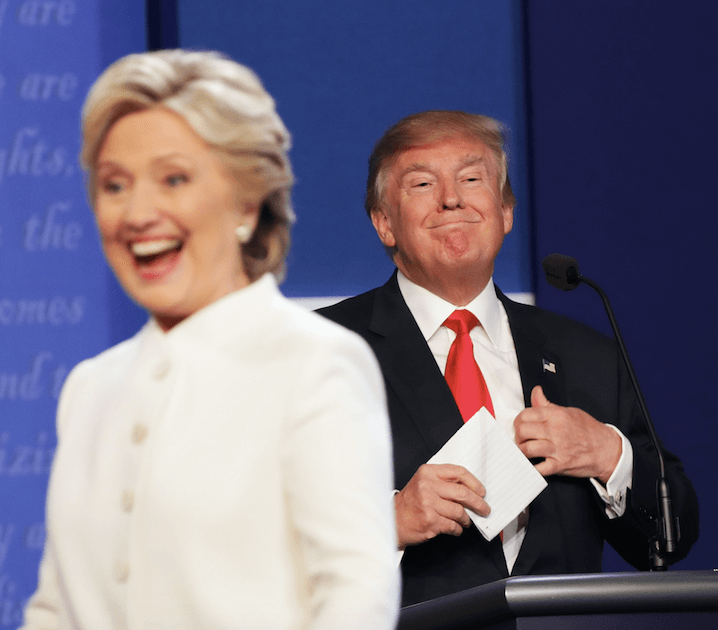There’s nothing more lucrative than American politics, just look at the total 2016 election spending. The Center for Responsive Politics projects that it’ll top off right around $2.65 billion. It’s a huge figure, but smaller than the historic $3.14 billion dropped on the race in 2008 (adjusted for inflation), the last time both parties ran non-incumbent candidates.
It’s easy to forget just how many people were in the running for president this cycle, given that most of their campaigns bit the dust early on. But there were a full 17 Republican candidates for the party’s nomination, and six Democrats. Between them, they raised and spent like hell.
Campaign finance reform has received a lot of lip service throughout the 2016 election, with Republican nominee Donald Trump relying primarily on self-funding for his primary run (though not his general election bid), and Democratic candidates Sec. Hillary Clinton and Sen. Bernie Sanders expressing commitment to the reversal of Citizens United.
Against that backdrop, let’s take a look at how much money was raised and spent throughout both the primaries and the general, and from where that money came.
The primaries: Highlights
Clinton was the biggest raiser and spender of the 2016 primaries, racking up $334.9 million, and spending about $241 million of that through April. Her campaign raised $238 million of that, while Super PACs and other outside groups clocked in around $97 mil.
The second-biggest raiser was Sanders, whose campaign raised and spent just about all the $229 million it received. Sanders broke the mold of modern major-party politics by eschewing Super PAC and big-money contributions for the most part in favor of small donations.
Trump raised and spent relatively little compared to his most competitive Republican challengers. He raised fewer than $70 million through April, mostly through self-funding. He put about $50 million of his own dough into his campaign.
Trump’s most competitive contender, Sen. Ted Cruz, spent about $136 million. One of the poorest-performing Republican candidates for the nomination, former Florida Gov. Jeb Bush, spent nearly all the $162 million contributed to his campaign. Despite being the most PAC-backed candidate, raking in $127 million from these groups, his campaign fizzled out early on.
The general election
Since April, Clinton’s had the advantage concerning campaign fundraising as well as Super PAC support.
Her campaign raised just over $513 million between April and October 19, according to the Federal Election Commission. And the Super PACs raising money indirectly to support her racked up $189 million.
Trump’s campaign, on the other hand, raised about $255 million through the end of the primaries leading up to Election Day. And Super PACs threw $57 million in support of him. As TIME reported, Clinton had over $62 million on hand going into the end of October, compared to Trump’s $16 million.
[postquote]
There are several explanations which could account for the fundraising and spending disparities between the two campaigns. It’s no secret that the Republican National Committee wasn’t thrilled with its party’s eventual nominee; it didn’t start spending on TV advertising for him until the final weeks of the election. And several reliable GOP donors and Super PACs were reluctant to get on board with him. The Democratic establishment was much more unified behind Clinton.
Then again, it can be argued that Trump didn’t need as much money as Clinton, given 1) the amount of free media coverage he’s garnered throughout the election season, and 2) his heavy reliance on social media rather than traditional and more costly forms of media through which to convey his message.
Takeaway
Contrary to trend, the 2016 election saw less money raised and spent than in former years, though there was no shortage of scrill flying around. Trump’s early self-funding, Sanders’ small-donor-driven campaign and Clinton’s Super PAC domination brought us a varied campaign finance landscape.
Have something to add to this story? Comment below or join the discussion on Facebook.
Header image: Getty









































